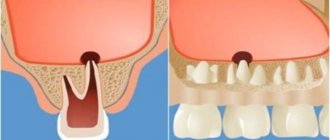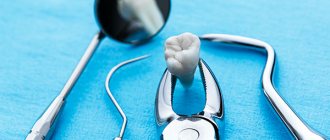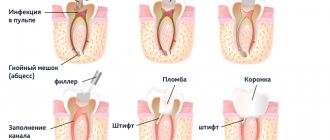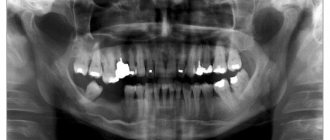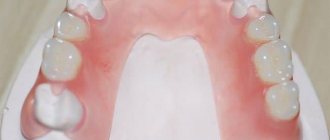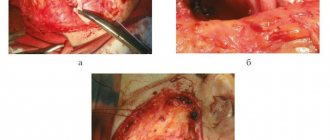Physiotherapeutic techniques are widely used in medical practice, as they contribute to the patient’s recovery and prevent the development of undesirable consequences from the disease. In clinical practice, methods based on the positive effect of electric current on the human body are often used. Fluctuarization in physiotherapy involves the effect of a sinusoidal pulse current with a low frequency on internal organs and skin. The method is widely used in modern medicine, in particular dentistry. It is important to note that the physiotherapy procedure can be carried out both in a hospital or clinic, and at home after being prescribed by a doctor.
Fluctuarization is an auxiliary treatment method used as part of complex therapy in dentistry and other fields of medicine.
About the method
The mechanisms of action of fluctuarization are similar to amplipulse therapy and diadynamic therapy. Such physiotherapy differs from these procedures in having a “softer” effect on the tissues of the body, since the electric current is characterized by asynchrony, aperiodicity and randomness of impulses, thereby allowing it to have a therapeutic effect with an insignificant influence.
In addition, the use of the method shows high efficiency compared to other types of physical treatment. This is due to the fact that during an asynchronous effect on the body’s cells, a change in their work is observed after the first procedure.
Fluctuarization in dentistry and other areas of medicine makes it possible to have a complex effect on the human body:
- pronounced anti-inflammatory and anti-edematous effect;
- increasing the speed of blood flow and outflow of lymphatic fluid from tissues;
- reduction in the severity of pain.
The large number of positive effects from the use of the procedure determines its use as part of complex treatment for a large number of patients with various pathologies.
Reviews
Like other types of physiotherapy, fluctuarization is used in dentistry less often than it deserves due to its high therapeutic effect.
Among the reasons are the lack of appropriate equipment in clinics and insufficient attention to physical therapy on the part of dentists.
If you or your child have ever experienced fluctuarization, please share your impressions of the procedure.
What disease did you treat with fluctuating current, what sensations did you experience, how effective was the treatment? You can leave a comment at the bottom of the page.
If you find an error, please select a piece of text and press Ctrl+Enter.
Gums tags
Did you like the article? stay tuned
Previous article
What is the danger of TMJ arthritis and what to do to prevent complications
Next article
Why axiography has not yet received the distribution it deserves in Russian dentistry
Selecting patients for physical therapy
All treatment methods are associated with the risk of side effects or ineffective use. In order to achieve maximum effect from the use of therapeutic procedures, doctors follow certain indications and contraindications when prescribing them. It is recommended to prescribe fluctuarization (flyuktuorizaciya) for the following conditions:
- degenerative changes in intervertebral discs with the development of osteochondrosis and radicular syndrome;
- arthritis and arthrosis of any cause;
- diseases of the peripheral nervous system;
- dental pathology: pulpitis, periodontitis, alveolitis and pain after tooth extraction;
- postoperative rehabilitation;
- diseases in gynecology.
In addition to the indications, doctors should also observe contraindications for fluctuarization for successful therapy:
- benign or malignant tumors;
- serious condition of patients due to pathology of internal organs;
- disruption of hemostasis;
- increased body temperature, including with an unknown cause;
- presence of a pacemaker or other metal devices;
- intolerance to electric current;
- impaired skin sensitivity.
If any of these contraindications are identified, fluctuarization should not be used. Otherwise, there is a high risk of progression of concomitant pathologies.
Types of electrotherapy
Fluctuarization is a method of physiotherapy that involves the effect of electric current on the human body. In this case, the current can have different shapes, which determines its biological effects.
Before performing a physical procedure, the attending physician carefully explains to the patient the course of treatment, as well as its possible risks.
Alternating current with symmetrical pulses is characterized by a constant change of positive and negative polarity. According to the instructions for the equipment, this type of current has the greatest depth of penetration deep into the body, and therefore is used to treat diseases of internal organs, blood vessels and diseases of the musculoskeletal system.
The bipolar type of current differs from the previous one in that the impulses are always negative. This type of physiotherapy allows the use of fluctuarization as medicinal electrophoresis, combining the effects of electric current with the use of drugs if there are indications for their use.
Rectified currents with one polarity have the ability to fluctuate in amplitude and frequency. This causes their galvanic effect, as a result of which the tissues begin to fluctuate. The procedure can also be supplemented with the use of medications.
Existing devices from different manufacturers have different fluctuarization modes. The choice of a specific type of current, as well as the frequency and duration of the procedure, is selected only by the attending physician.
What is a symptom of fluctuation in medicine?
When epithelial, soft, bone or any other type of tissue is damaged, sooner or later local inflammation occurs, which without adequate drug therapy passes into the acute phase. Especially if in addition to this there is also a bacterial infection.
Against this background, there is a high probability of accumulation of purulent contents in the wound, the formation of lymph stagnation with the formation of pronounced edema in the area of the diseased area of the body. To determine the presence or absence of foreign fluid in the surrounding diseased tissues, the doctor treating the patient palpates the skin and, if fluid is detected in the subcutaneous layer, identifies this symptom as a fluctuation.
In this case, it does not matter significantly what kind of biological fluid is located under the surface of the epithelium (blood, pus, lymph, ichor). The very nature of the origin of the fluctuation symptom lies in the presence of an excess volume of fluid in that part of the human body where it is located and should not be present due to the physiological structure of the patient’s body. If the sign of fluctuation is pronounced and the doctor only needs to feel the diseased part of the body to detect a certain volume of liquid mass in the subcutaneous layer, then in most cases no additional examination is required and the doctor will immediately prescribe further treatment aimed at eliminating the symptom of fluctuation. In more complex situations, it is possible to prescribe an ultrasound scan in order to 100% confirm the pathological sign. The method of further course of therapy depends on confirmation or refutation of its presence.
Therapy devices
In clinical practice, a large number of instruments are used to carry out the procedure. The most famous device for fluctuarization is “ASB-2-1”, however, in recent years its use has decreased significantly due to the need for additional grounding of the device during operation.
The most frequently used devices in clinical practice are: therapeutic equipment “FT-30-05” and “ASB-2M”, a device used in dental practice “FS-100”. The latter device is often used to combat toothache and to treat inflammatory gum diseases. ASB-2M differs from its analogues in its ability to use various types of electric current and modes of exposure.
The choice of a specific device for physiotherapy is determined by the attending physician depending on the patient’s indications and contraindications.
Indications and restrictions
The list of indications is quite wide. A good therapeutic effect is observed in the treatment of the following pathologies of the oral cavity:
- Acute inflammatory diseases of the periodontium and oral mucosa (gingivitis, alveolitis, etc.).
- Exacerbations of chronic inflammation (temporomandibular joint arthritis, periodontitis, pulpitis, alveolitis).
- Purulent processes in the oral cavity (phlegmon, abscesses);
- Neuralgic pathologies (inflammation of the trigeminal, occipital and peripheral nerves).
- Impaired tone and contracture of the masticatory muscles.
- Diseases of the salivary glands.
- Post-filling pain, etc.
Due to the great influence of physiotherapy on metabolism in the area of influence of the physical factor, its use requires great caution.
The procedure is contraindicated for patients with the following pathologies and abnormalities:
- Blood diseases, low coagulability, bleeding, leukemia.
- Cancer pathologies.
- AH in the 3rd stage.
- Severe general exhaustion.
- Stroke, cerebral atherosclerosis.
- Uncompensated cardiovascular diseases.
- Temperature above 38 °C.
- Active pulmonary tuberculosis.
- Epilepsy.
- The presence of a pacemaker and metal in the tissues.
- Thrombobliterating diseases.
- Vibration disease.
- Electric current intolerance.
- Severe mental conditions associated with fear, anxiety and restlessness.
- Meniere's syndrome (increased amount of endolymph in the ear).
- Acute infections.
- Post-infarction state (within a year after the heart attack).
Acute inflammation imposes a limitation on the number of daily sessions. They should not last more than 5 days. Subsequent procedures are carried out every other day.
It is not recommended to prescribe sessions to patients with increased body reactivity and reduced immunity.
Purpose of Perio Flow technology and its capabilities.
This publication provides a detailed description of the Florida Probe.
Here https://www.vash-dentist.ru/lechenie/desnyi/kak-mozhno-poluchit-ozhog.html all the most important things about how to treat a gum burn.
Carrying out the technique
To carry out fluctuarization, various types of devices are used. The procedure can be carried out both in a medical institution and at home. It is important to note that when performing the method at home, the patient or people close to him must undergo special training in a physiotherapy room. Otherwise, the treatment may cause undesirable consequences in the person.
At the beginning of treatment, the doctor informs the patient about the upcoming treatment session and explains to him the rules of the procedure. After this, fluctuarization is performed according to the following algorithm:
- The patient lies down or sits on a couch or chair, respectively.
- Electrodes are placed at the intended site of influence. The number of electrodes, as well as their shape, are determined by the localization of the pathological process and the available equipment.
- The device is always turned on at minimum current values. After this, the current strength gradually increases until the patient feels a slight tingling sensation on the skin under the electrodes.
- At the end of the session, the device turns off and the electrodes are removed from the surface of the person’s body.
- If a procedure is necessary to treat dental problems, small area electrodes soldered together are used.
The duration of one physiotherapeutic procedure is from 5 to 40 minutes. The specific time of the session depends on the disease identified in the patient and the severity of the symptoms present. If physical therapy is performed for children, the duration of the session is halved. The number of procedures in a therapeutic course is 5-15 with an interval of 1-2 days, which is necessary for a full tissue response to the action of electric current.
If a repeat course is necessary, it is necessary to take a break of one to two months, after which the attending physician re-examines the patient, assessing his general condition.
Negative consequences
Reviews from doctors and patients indicate that fluctuarization rarely causes side effects. The method is well tolerated and can be used for a wide range of diseases of internal organs.
However, if the procedure is prescribed incorrectly, namely, non-compliance with indications and contraindications, patients may experience irritation and damage to the skin, progression of concomitant pathologies (malignant neoplasms, acute infectious processes, etc.). To prevent such conditions, patients should be thoroughly examined before undergoing physical treatment, and also report information about existing diseases to their doctor.
Physiotherapeutic techniques, including fluctuarization, are widely used in the treatment of diseases of internal organs and dentistry. Such methods make it possible to increase the effectiveness of complex therapy and reduce the risk of side effects. Fluctuarization can be performed at home after preliminary training from specialists, or in a medical institution under the supervision of medical professionals. The appointment and selection of a specific type of physiotherapy, as well as the parameters of the effect on the body, is always carried out by the attending physician. Any attempts at self-medication are fraught with the development of negative consequences and the progression of concomitant pathologies.
Elimination of the symptom of fluctuation
After the doctor determines the presence of this sign, which threatens multiple complications for the patient himself, the surgeon begins to treat the patient. Elimination of the symptom of fluctuation is possible only by opening the skin with further removal of excess fluid. To do this, a surgical intervention is performed and the doctor, using surgical instruments, cuts the epithelial surface of the body and cleans out the accumulated purulent contents or any other biological mass that is located in the patient’s body and its presence causes the pathological symptom.
If an accumulation of fluid is found inside the joints of the upper or lower extremities, or in the pleural or abdominal cavity, then a hole is made in the body into which the doctor inserts a drainage system. Over the required amount of time, all the fluid accumulated in the body gradually drains into a special container designed to collect exudate. To ensure that the symptom does not reappear in the form of a relapse, it is extremely important, while removing the fluid, to also treat the underlying disease, the presence of which caused the development of the fluctuation symptom.
After the surgical intervention is completed, the rehabilitation process begins. In this case, it is recommended to take anti-inflammatory and antibacterial drugs to reduce the swelling of the damaged area of the body as a result of its mechanical dissection, as well as to prevent another accumulation of biological fluid. It is very important to prevent relapse in the first 5 days after removal of the exudate. Particular attention should be paid to joints if signs of fluctuation have been noted within their hollow structure.
